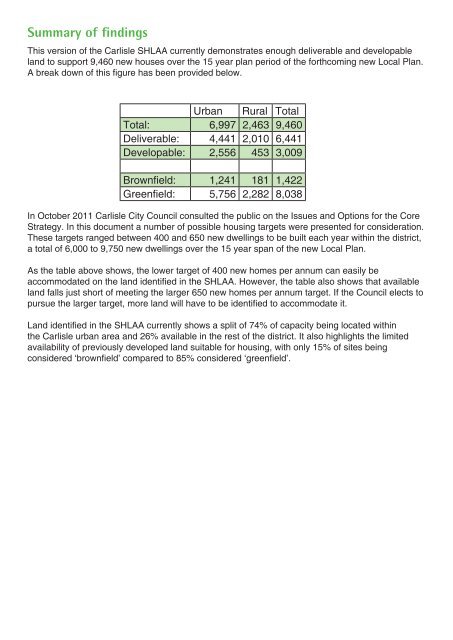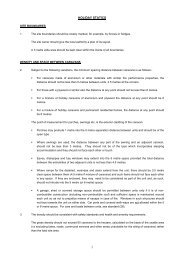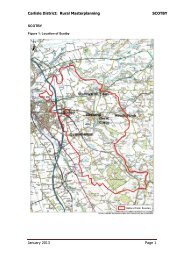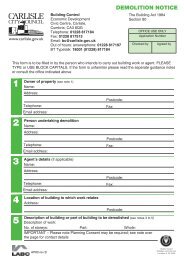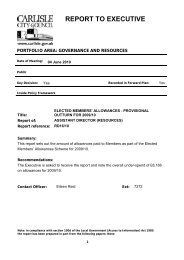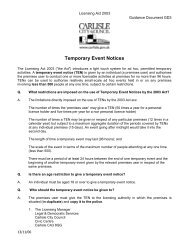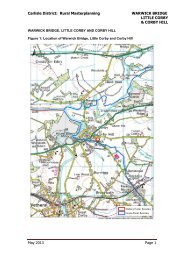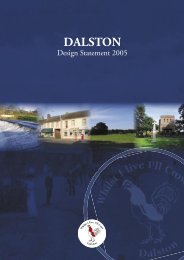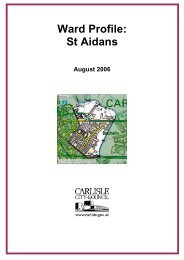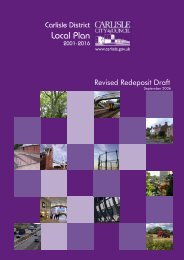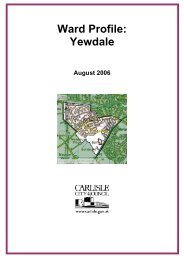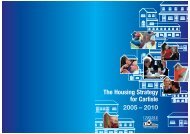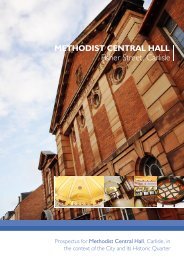(Final) Sept 2012 in PDF format - Carlisle City Council
(Final) Sept 2012 in PDF format - Carlisle City Council
(Final) Sept 2012 in PDF format - Carlisle City Council
You also want an ePaper? Increase the reach of your titles
YUMPU automatically turns print PDFs into web optimized ePapers that Google loves.
Summary of f<strong>in</strong>d<strong>in</strong>gsThis version of the <strong>Carlisle</strong> SHLAA currently demonstrates enough deliverable and developableland to support 9,460 new houses over the 15 year plan period of the forthcom<strong>in</strong>g new Local Plan.A break down of this fi gure has been provided below.Urban Rural TotalTotal: 6,997 2,463 9,460Deliverable: 4,441 2,010 6,441Developable: 2,556 453 3,009Brownfi eld: 1,241 181 1,422Greenfi eld: 5,756 2,282 8,038In October 2011 <strong>Carlisle</strong> <strong>City</strong> <strong>Council</strong> consulted the public on the Issues and Options for the CoreStrategy. In this document a number of possible hous<strong>in</strong>g targets were presented for consideration.These targets ranged between 400 and 650 new dwell<strong>in</strong>gs to be built each year with<strong>in</strong> the district,a total of 6,000 to 9,750 new dwell<strong>in</strong>gs over the 15 year span of the new Local Plan.As the table above shows, the lower target of 400 new homes per annum can easily beaccommodated on the land identifi ed <strong>in</strong> the SHLAA. However, the table also shows that availableland falls just short of meet<strong>in</strong>g the larger 650 new homes per annum target. If the <strong>Council</strong> elects topursue the larger target, more land will have to be identifi ed to accommodate it.Land identifi ed <strong>in</strong> the SHLAA currently shows a split of 74% of capacity be<strong>in</strong>g located with<strong>in</strong>the <strong>Carlisle</strong> urban area and 26% available <strong>in</strong> the rest of the district. It also highlights the limitedavailability of previously developed land suitable for hous<strong>in</strong>g, with only 15% of sites be<strong>in</strong>gconsidered ‘brownfi eld’ compared to 85% considered ‘greenfi eld’.


